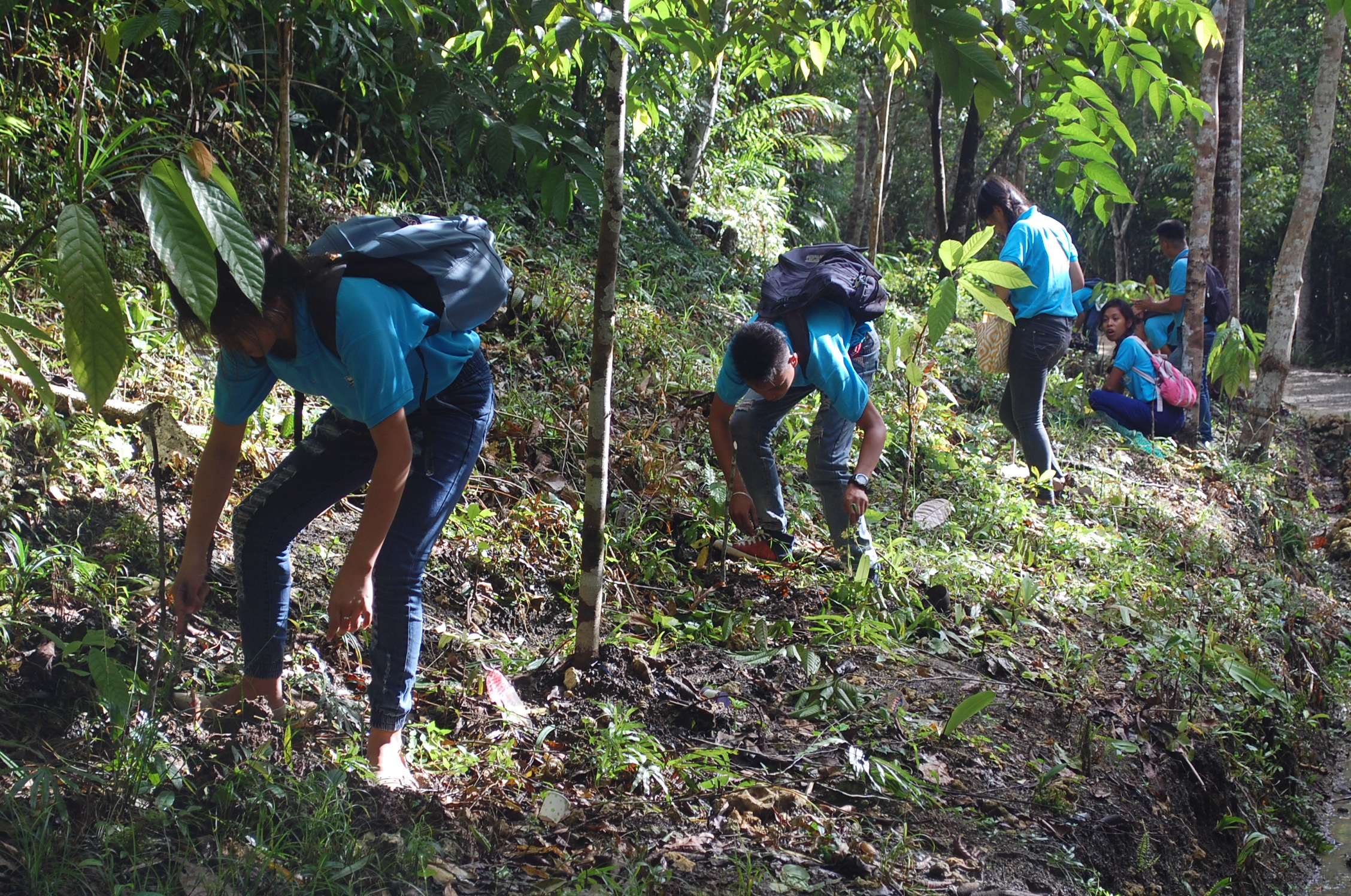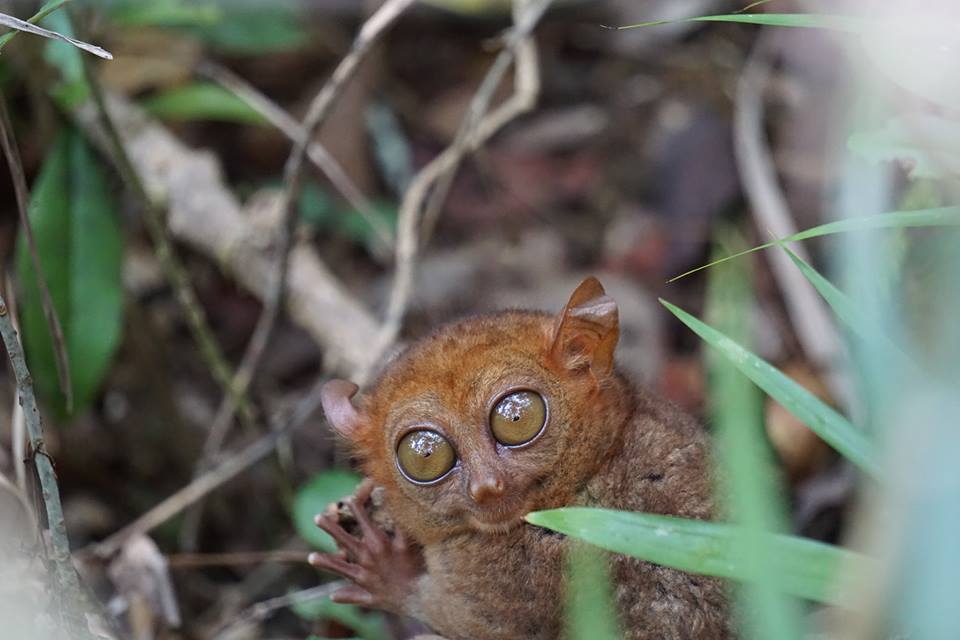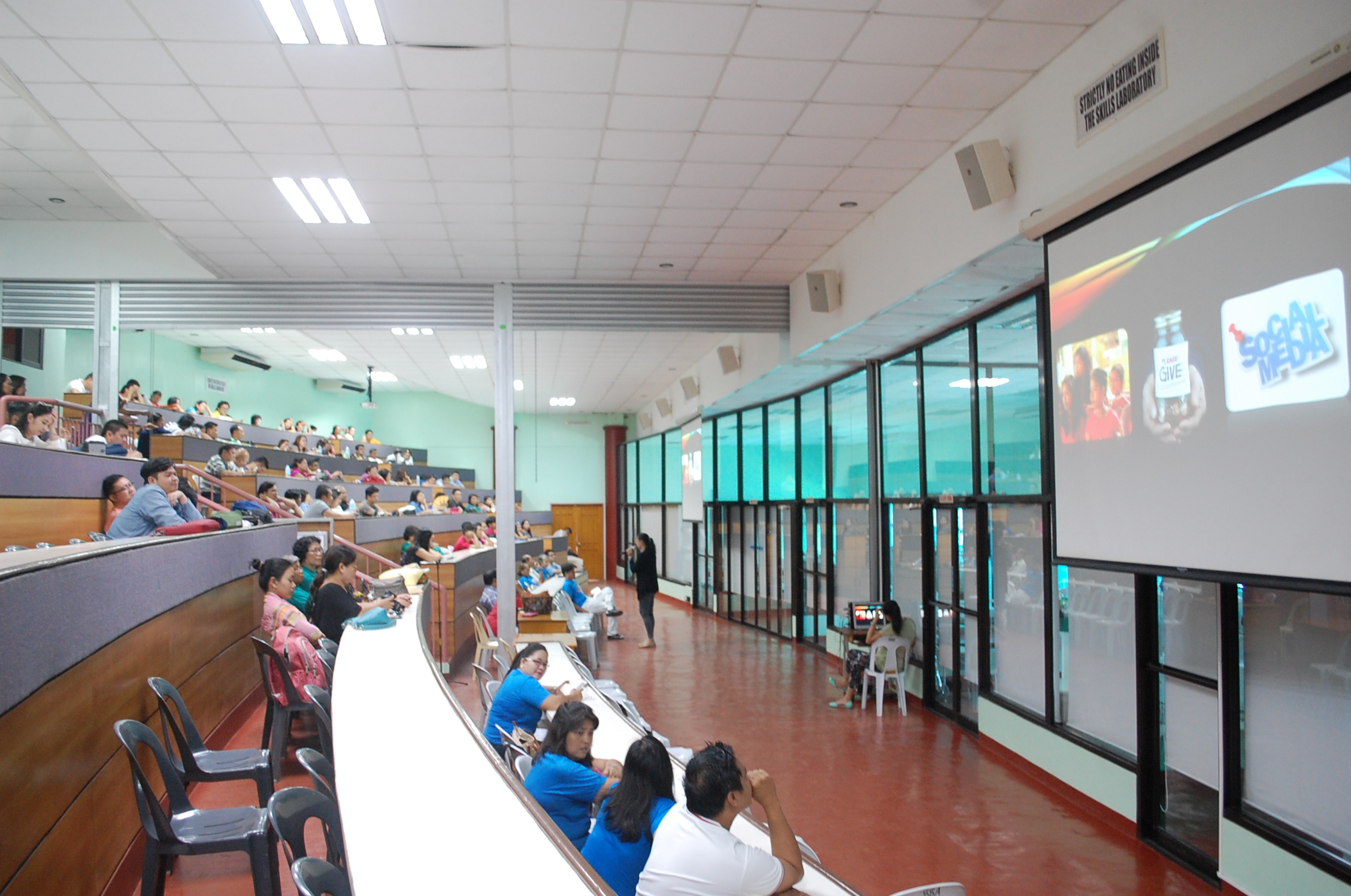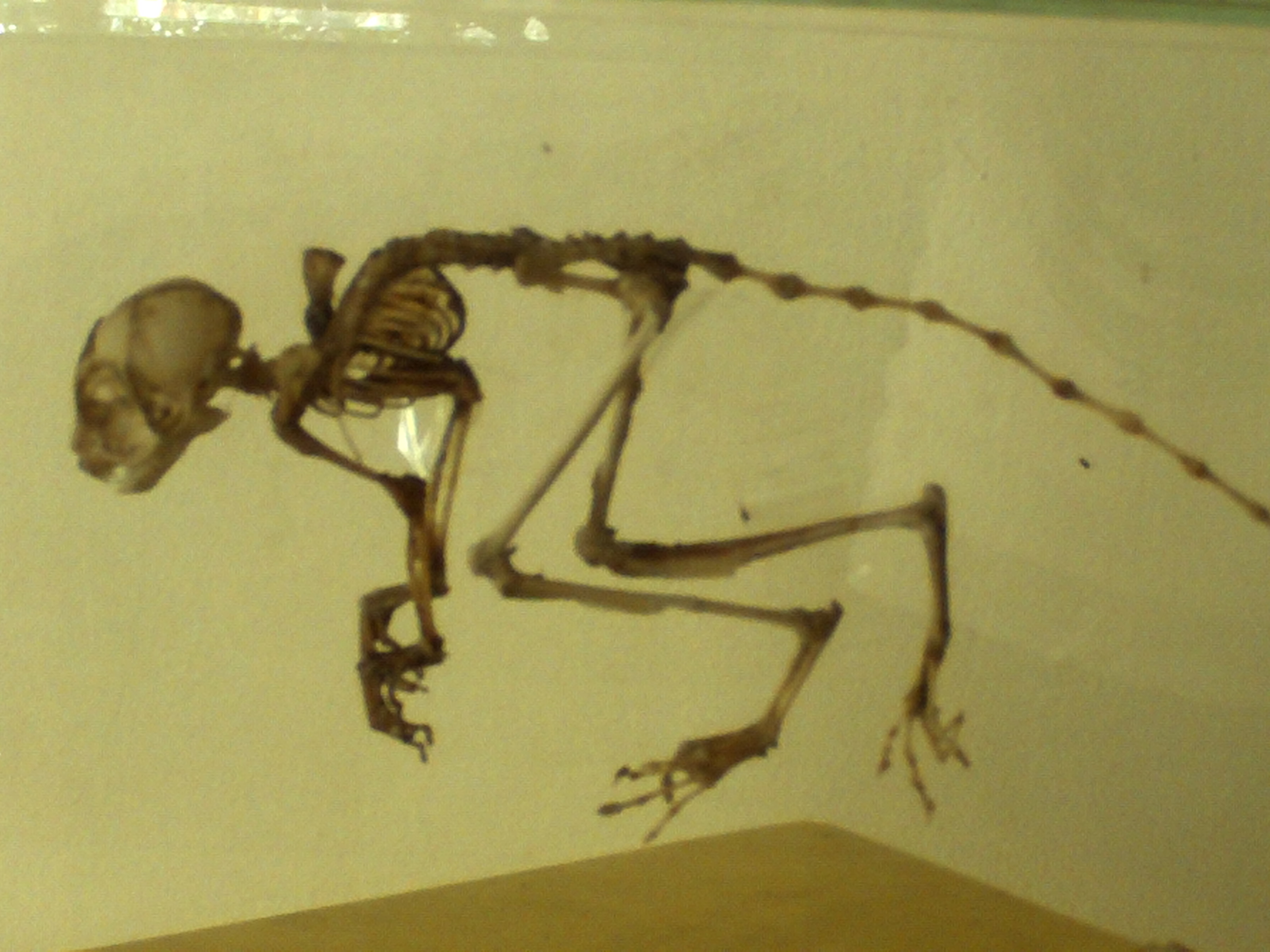
Author: wptarsier
Hello everybody! Happy #monday! throwing back some Photo taken from fb of PTFI guide Sheila. :) #tarsiersanctuary#corellatarsier#tarsierfoundation#ptfi

Helping comes in many forms such as visiting us in our tarsier sanctuary in Corella, taking a photo a uploading in on any social media with "Corellatarsier" "tarsierfoundation"… Spread the love! Gratitude to all! :)

Fruits Trees from Tzu Chi
“To help preserve the world’s smallest primate” and the Mother Earth as a whole.”-excerpts from Tzu Chi Foundation
Last October 22, 2016, Philippine Tarsier Foundation, Corella Tarsier Sanctuary got a wonderful visit from Tzu Chi Foundation. The visit was primarily for biodiversity support of the Tarsier Sanctuary by planting close to 140 insect host plants which are basically fruit trees.
The fruit trees would attract insects such as beetles and grasshoppers which are the ideal food for tarsiers… not fruit and certainly not worms! Not matter how mega or superworm they are. Or no matter how cultured those maybe.
Plus the Tarsiers health primarily rests on their need to hunt and that means allowing them to roam for more than 1 kilometer every night to catch live insects. That is why caging them would never work! And claims of breeding them in a 20 meter square area is just simple–IMPOSSIBLE! 🙂
Tarsier population in Corella is growing and therefore the need for insects too is increasing, and these fruit trees are a GREAT HELP.
Sad But True: Other tarsier sites in Bohol (because tarsiers scattered all over Bohol) are experiencing a decrease in tarsier numbers so much since the areas too have tarsier viewing facilities which are simply for profit no matter how fancy they call themselves be and tarsiers just aren’t happy with mahogany trees.
Thank you Tzu Chi for the warm support. May the world be filled with amazing humans like you.
From Spain to #Tarsierfoundation! thank you guys for visiting us and thanks Clowie, our very own part-time field guide (currently a tourism student) for keeping the things fun and positive!#corella#philippinetarsierfoundation #tarsier#ptfiguests

We are now OPEN!!! :)#tarsier#corella#ptfi#ptfiguests #tarsierfoundation

gues who visited?:) #goodmorning#tarsiersanctuarybohol #ptfi#ptfiguests

Getting Here
Via Public Transport:
- From Seaport or Airport get into a tricycle and tell driver to take you to Sikatuna Jeepney Terminal (This is right infront of Island City Mall). Fare is P100.00 per tricycle.
- From Sikatuna Jeepney Terminal, get into a Jeepney bound to Sikatuna via Corella. (Just anybody there which jeepney passes by Philippine Tarsier Foundation. )This jeepney drops you off to Philippine Tarsier Foundation. Fare is P17.00. Tell the driver of the jeepney that you are headed to Philippine Tarsier Sanctuary in Corella.
- Upon arrival there is a huge signage and rough road, take it and walk for 300 meters to the Research Building where you will pay P150.00 entrance fee and have a guide to show you around the sanctuary and where to see the tarsiers.
- Going Back, just take a jeepney headed to Tagbilaran. And yes it is safe to hitch hike here. Fare is P15.00 for jeepney.
Via Tricycle:
- From Airport or seaport or anywhere in Tagbilaran City, take a tricycle and ask driver to take you to Philippine Tarsier Sanctuary in Corella One way is P150 per tricycle, round trip is P500 when driver waits for you.
Via Car:
- Make sure to contact a trusted travel agency. Tell them to take you to Philippine Tarsier Sanctuary in Corella. Fare is P500 per car and P1,000 round trip from Tagbilaran City.
Feel free to contact us to arrange car for you.
IMPORTANT:
- Bring Rain Coat- weather is unpredictable. The Sanctuary is in the center of forest so rain comes often than in other parts of the island.
- You can put on some insect repellent
- They have a documentary video there. If you have free time, you be happy to watch it.
Spreading the Tarsier Love with NOSTE and HNU
NOTSE- a National Organization of Science Teachers and Educators held their 2016 NOSTE International Research and Seminar Workshop in Cebu with a day in Bohol where in Philippine Tarsier Foundation was their main site tour last October 9.
Before the brief tour to the Tarsier Sanctuary in Corella, the manager of the Tarsier Foundation was made to do a 30 minute Tarsier Education Talk and campaign for tarsier conservation which was the highlight of the October 9 event held in Nursing Skills Laboratory, HNU.
The event was participated by Science Teachers all over the Philippines and a representative from Guam and Malaysia and all expressed their love for the Tarsiers.
Want to spread the word? Want us to be part of your event? Send us a message and let’s collaborate!
Tarsier Life and Times
by Tom Lumapas
We know that humans usually have a life span that varies depending on the conditions of life. During the Hellenistic period of Ancient Greece, a man reaching the age of 40 would be considered old. Now, it is not surprising to see people aged 70 to 80 years old. Sometimes it is even expected and anything else to be unfortunate.
This got me thinking, how long do Tarsiers live? Considering that they’re wild animals a great many are unfamiliar with, I asked Mr. Carlito Pizarras, the “Tarsier man” for answers on how long these animals live for and what factors affect their life span.
Now Tarsiers, like all living things, have a life span. This life span varies, like us humans, as the conditions of each individual life vary. It is obvious that if we keep animals placed in very small cages where they are unable to move freely to get the proper exercise, most especially if they are wild animals, their life span will be drastically shorter.
In the wild, the Philippine Tarsier can live for as long as 20 to 25 years. Female tarsiers typically live longer than their male counterparts due to their less aggressive nature as compared to their male counterparts. Adult males usually attack other males for territory and marked females, often biting and clawing each other to establish dominance that might result in death. Thus, males often do not last as long as the females. Given that younger, stronger male seeking to usurp territory could very well cause life threatening damage, it is not surprising that males do not reach the maximum expected age that some females might possibly reach.
The Philippine Tarsier has been a recorded life span of 12 years at most in captivity. However, a great many of these Tarsiers die only after a day or at most a few days if kept unhealthily in small cages and/or put under great strain while in captivity. If their places of confinement are not well designed to mimic their ideal habitat, the tarsiers might feel unhealthily, stressed. This does not affect them only in mental terms but also physically as some research has shown that the physical characteristics of Tarsiers kept in captivity mirrors those of much older Tarsiers in the wild.
Ideally, Tarsiers kept in captivity must have an abundance of shrubs, bushes and bamboo, the latter being important as a source of water for Tarsiers. These plants are important to the Tarsier since during periods of rain, the leaves of these plants serve a dual purpose. One of these is to catch the water that Tarsiers use as a source to cool down and to find a refreshing drink while another use for these leaves are a natural roofing from getting directly hit by rain water, which they hate.
In captivity though, they must have a varied diet if they hope to live longer than their projected few days at life. Thus, they require a varied diet of live insects in order to keep them healthy and enough space to chase them around the area. Without such movement and exercise of the hunt, they become lethargic and tired. Like a person who refuses to exercise, the risks of an early death rise dramatically. Considering that for a Tarsier to be healthy it must consume 1/10th of its own body weight, it is not surprising that, given the difficulty in acquiring live insects, captive Tarsiers may be underfed.
Now on the important life moments of the Philippine Tarsier, Sir Carlito Pizarras, explained that the female after mating returns to her own territory and gives birth after six months. She uses another six months to take care of her child. During these six months of growing up, the eyes of the juvenile Philippine Tarsier change from Green/Blue to Brown. The coat also changes from Greyish brown to reddish brown. After six months, the juvenile leaves the mother to find her own territory or fight for one. At reaching one year of age the Philippine Tarsier, if male has visible testicles and gain more male like facial features. However, the male like the female will not reach sexual maturity until around 3 years of age. At which point the Philippine Tarsier is ready to find mates and bear children. The males start to become more aggressive at this age while the females to signal adolescence start to have vaginal swellings with bloody discharge much like menstruation. The age of 5 can be described as the peak age for both genders as they gain their maximum size, growing to four or five inches. They also acquire permanent dentition around this time.
The Philippine Tarsier may have a short life by human standards, however the moments that it lives can, in some way, be found very relatable to us. Thus, we should try not to make their lives any shorter than they already are.





